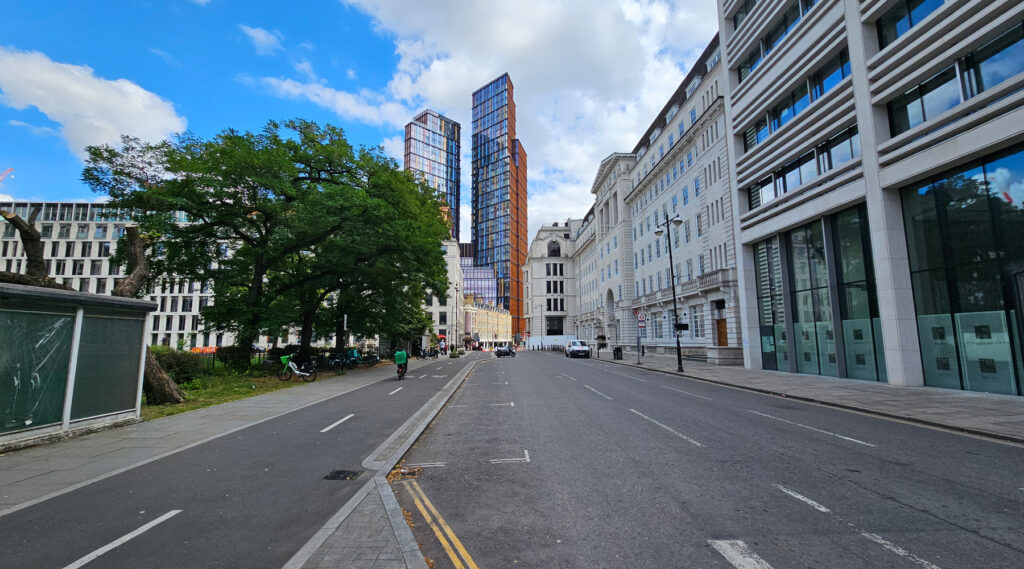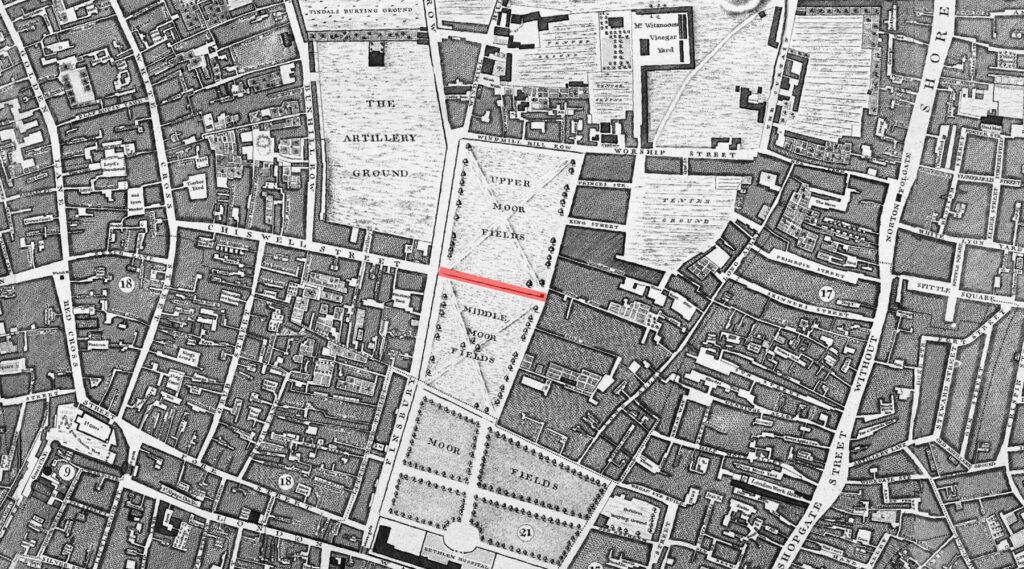A strip of land to the south of Finsbury Square in the City that’s today just a busy road was once far more notorious — as a space where gay men congregated.
This was Sodomites Walk.
The exact location isn’t known, although usually described as being on the south side of Finsbury Square, and if you look at contemporary maps of the time, there was a marked boundary between Upper Moor Fields — which is Finsbury Square today — and a similar sized Middle Moor Fields to the south, which is now offices.
It’s a curious mix, in that the area was well enough known to be a gay cruising ground that it gained a nickname for it, but did so at a time when people were prosecuted for being gay. If arrested, men could be sent to prison or pilloried on the location.
An editorial in The London Journal called Moorfields a “molly market”, an early nickname for gay men. The idea that it was a walk has also come from the popular notion of walking around parks for leisure and to socialise, and evidently, this one walkway became known for very social activities.
One of the more notable instances was the arrest of William Brown in 1726, who was accused of assaulting a man with intent to commit sodomy. It was a trap though, as the claimed victim, Thomas Newton was working with the police as a honeytrap and the police were nearby watching.
In the trial, famously, William Brown said “I think there’s no Crime in making what use I please of my own Body”
He was sentenced to stand in the pillory in Moorfields, pay 10 Marks, and a year in prison.
Although not explicitly a death sentence, being sent to the pillory could be, as people would throw things at the person in the stocks, and sometimes hard enough to kill the prisoner. It’s assumed he survived the pillory, but uncertain and several satires were published about his ordeal, suggesting it was incredibly unpleasant.
The police continued to raid and harass people for homosexuality right up to fairly recent times, and even today, there are some people who would be quite happy to see the pillory come back as a punishment simply for being gay.
Finsbury Square, at the time an oval-shaped square was developed in the 1770s, and that pretty much killed off the Sodomites Walk. You can still walk along it though, dodging the taxis and buses and cyclists.









10 Mark’s?
In England a Mark was a third of a pound, or 6shillings and 8 pence.
So, a fine of 10 Mark’s was £3 6s 8d.
In today’s money, according to the Bank of England Inflation calculator, that’s £540 and change.
I was walking there just the other day and I had no idea of its history.